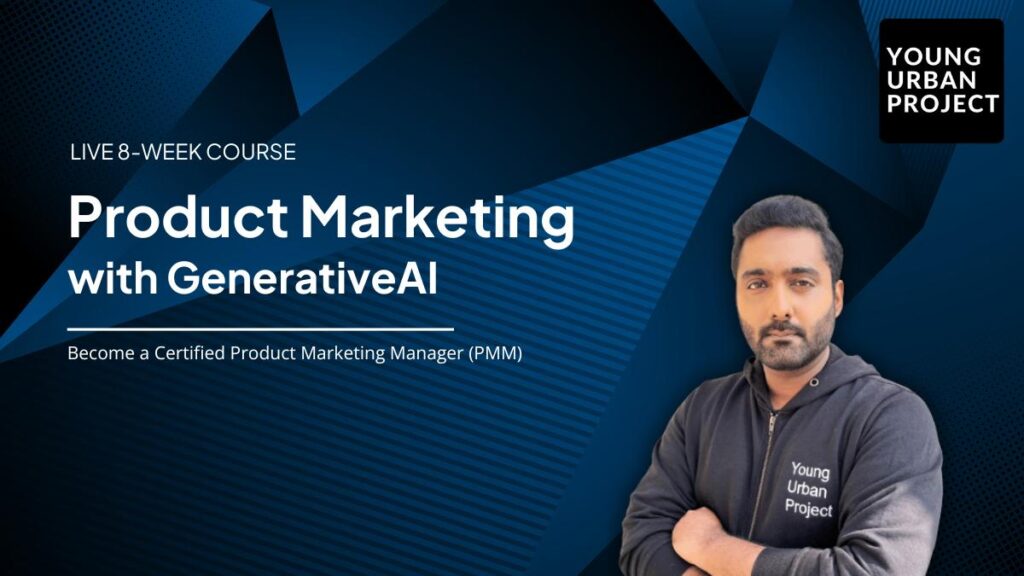Ever wondered why some products just click with people, while others totally flop? I mean, haven’t we all seen that one product go viral overnight while another, even if it’s honestly good, barely gets noticed?
That’s not random. It usually boils down to product marketing.
Product marketing is one of those things that sounds simple but runs deep. It’s about more than just selling stuff. It’s about finding the right market, knowing exactly who you’re talking to, and making sure the product solves a problem they actually care about.
And here’s the kicker: the strategy that works when you first launch? Yeah, it won’t work forever. As your product grows, your marketing has to evolve with it.
That’s why understanding the different stages of product marketing can make or break your business. And if you get this right, you’re not just launching products, you’re building sustainable growth.
Let’s break this down, step by step.
Table of Contents
What is the Product Life Cycle?
Okay, before we go further, let’s get on the same page.
The product life cycle is basically a roadmap of a product’s journey. It’s like the life story of a product, from the moment someone sketches the idea on a napkin to the day it disappears off shelves (or app stores).
It’s split into five main stages:
- Development
- Introduction
- Growth
- Maturity
- Decline
Why should you care?
Because each of these stages needs a different marketing plan. If you treat your growth phase like it’s still launch week, you’re gonna miss big opportunities. If you don’t know when your product’s declining, you might waste money on ads no one’s paying attention to anymore.
The 5 Main Stages of Product Marketing
Alright, let’s dive into the good stuff. Here’s how product marketing actually works across each phase, with real strategies you can use.
Stage 1: Development (Pre-Launch)
This is the part before anyone outside your team knows your product exists. It’s exciting but risky.
What’s happening:
- You’re doing research.
- You’re talking to potential customers.
- Maybe you’re making a prototype or MVP (Minimum Viable Product).
Your focus here should be:
- Making sure people actually want this thing.
- Testing early versions with beta users.
- Figuring out what makes your product different from what’s already out there.
Why this matters:
No one wants to launch to crickets. If you skip this part, you could spend months (or years) building something people don’t really need.
Example:
Car companies spend years testing electric vehicle prototypes before they hit the road. They don’t just build something and hope for the best. They test, tweak, test again.
Stage 2: Introduction
Now it’s go-time. Your product’s ready, and you’re putting it out into the world.
Goals here:
- Get attention.
- Find your early adopters, those people who love trying new things first.
How to market:
- Do a launch event. It doesn’t have to be fancy, just memorable.
- Partner with influencers in your space, people trust people.
- Share content that teaches people what your product does and why it matters.
Why this matters:
If people don’t know about your product, they won’t buy it. Simple as that.
Example:
Every time a new phone or gadget drops, you see influencers unboxing it, YouTubers reviewing it, and brands hyping it up everywhere. That’s introduction-phase marketing in action.
Stage 3: Growth
Now we’re cooking. People know your product, and sales are climbing.
Goals here:
- Reach more people.
- Start focusing on keeping customers, not just getting new ones.
Good marketing moves:
- Launch referral programs. Let your current users bring in their friends.
- Drop updates or new features that make people stick around.
- Invest in ads, this is where paid marketing can start really paying off.
Why this matters:
This is usually the phase where your business stops just surviving, and actually starts thriving.
Example:
Look at Netflix during its early streaming days. They kept adding new shows and features, getting people to stick around while also growing their subscriber base worldwide.

Enroll Now: Product Marketing Course Online
Stage 4: Maturity
At this point, you’re well-known. People know your brand. But guess what? Competition’s catching up.
Goals here:
- Stand out.
- Find ways to squeeze more value from what you’ve already built.
Marketing tactics:
- Bundle products together for better deals.
- Maybe refresh your brand look or messaging.
- Innovate with features that your competitors haven’t thought of yet.
Why this matters:
Without fresh ideas, customers will drift toward the next shiny object.
Example:
Smartphones are the perfect example here. The major brands are all fighting for attention now by tweaking cameras, software, or packaging deals to keep you loyal.
Stage 5: Decline
It happens to almost every product eventually. Sales slow down, newer products take over, or technology makes yours obsolete.
Goals:
- Either make the most of the remaining demand or start planning your exit.
Marketing strategies:
- Offer big discounts or bundle sales.
- See if you can reposition the product for a smaller niche.
- Maybe it’s time to move on to the next big thing.
Why this matters:
Ignoring decline doesn’t stop it. Planning for it helps you stay profitable to the very end.
Example:
Remember DVDs? As streaming grew, DVDs went from a must-have to something you find in the bargain bin at the supermarket.
Also Read: Product Marketing vs Brand Marketing
How Competition and Market Factors Influence Product Life Cycle
Now here’s the thing: a product’s life cycle isn’t happening in a bubble. What’s going on around you in the market can either speed things up or slow them down. Sometimes, it can even completely flip the script on your product.
Competitors Make Things Interesting
Let’s say you’ve got a product in the growth phase. Sales are going up, and things feel good. Then suddenly… a competitor drops a newer, better, shinier version of what you offer.
What happens?
That growth phase might slam on the brakes and shove you into maturity or even decline earlier than expected.
And it’s not just about who has the better product, it’s also about who tells the story better. Marketing is often where the battle is won.
Market Shifts Change the Game
Consumer preferences change. Tech evolves. New laws come in. Any of these can mess with your life cycle plan.
Example:
Remember Nokia? Back in the early 2000s, they basically owned the mobile phone market. Then smartphones came along, and Nokia didn’t pivot fast enough. Competitors like Apple and Samsung rewrote the whole playbook, and Nokia’s maturity phase turned into decline almost overnight.
It’s not always fair, but that’s business. The brands that stay curious and flexible usually last the longest.
External Factors
Don’t forget other outside forces too:
- Economic downturns
- New regulations
- Global events (remember supply chain disruptions?)
All of these can shorten or extend product life cycles whether you’re ready or not.
Also Read: How to Become a Successful Product Marketing Manager
How to Extend the Product Life Cycle
Nobody wants their product to hit decline if they can help it. Luckily, there are ways to stretch out that sweet spot where your product keeps selling and your brand keeps growing.
Here are some tried-and-tested strategies:
1. Product Diversification
Can you create spin-offs or related products? Maybe you can add features or launch new versions targeted at specific customer segments.
Example:
Think about soft drinks. Coca-Cola didn’t stop with the classic Coke. They added Diet Coke, Coke Zero, Cherry Coke, you name it. Same brand, more choices.
2. Target New Markets
If things feel saturated where you are, go find a new audience.
That might be a new geographic market or a different demographic altogether.
Example:
A fitness brand might pivot from selling to hardcore gym-goers to beginners or even seniors looking for gentle workouts.
3. Upgrade Product Features
One of the fastest ways to stay relevant is by making the product better. Add features. Improve design. Solve new pain points.
Example:
Look at how apps like Spotify keep releasing new personalized playlists, podcasts, and discovery tools to keep people engaged.
4. Reposition Your Brand Identity
Sometimes it’s not the product that needs fixing, it’s the perception.
A fresh marketing angle or new brand message can breathe new life into something that was getting stale.
Example:
Old Spice is a great case. It went from being “your dad’s deodorant” to suddenly being funny, weird, and cool thanks to clever rebranding campaigns.
Real-World Examples of Product Life Cycles
Alright, let’s bring this to life with some real stories you’ve probably seen in action.
Case Study 1: Apple iPhone Evolution
Apple is basically a masterclass in product life cycle management.
When the first iPhone launched, it was pure innovation. Total Introduction phase. As it moved into Growth and Maturity, what did Apple do?
- Released new models regularly
- Added features like better cameras, Face ID, new chipsets
- Shifted their messaging to focus on privacy and security
- Created an entire ecosystem (AirPods, Apple Watch, iCloud)
Now, every year brings a new iPhone, but it’s not about radical change anymore, it’s about refinements. Apple knows the market’s mature, but they stretch it by appealing to new users, trade-in offers, and die-hard fans.
Also Read: Apple Marketing Case Study
Case Study 2: Coca-Cola’s Product Lifecycle Management
Another great example is Coca-Cola.
If Coca-Cola had stayed with just its original drink, it might’ve faded. But they kept reinventing how people connect with their product.
- New flavors for different regions
- Packaging innovations (remember personalized name bottles?)
- Expansion into healthier options with low-sugar or no-sugar choices
- Major partnerships and global advertising campaigns
Even in Maturity, Coca-Cola stays relevant by tying itself to events like the Olympics or collaborating with new artists or pop culture trends.
Also Read: 11 Great Product Marketing Examples
Conclusion
Look, product marketing isn’t just one of those “nice to have” things. It’s what makes the difference between a product that just… exists and one that actually grows.
But here’s the thing most people don’t tell you: marketing isn’t static. What works in your launch phase probably won’t work three years later. The key is knowing where your product is in its life cycle, and then adjusting your approach before it’s too late.
Brands that keep paying attention to their market, and aren’t afraid to switch things up, are the ones that last.
And honestly, it’s not about being perfect. It’s about being present. Watching the market. Listening to customers. Tweaking when you need to.
That’s how you grow something that sticks around.
FAQs: Stages of Product Marketing
1. What is the difference between product marketing and product life cycle?
Product marketing is how you sell the product. The product life cycle is when you sell it, depending on which stage it’s in.
2. Which stage of the product life cycle is most profitable?
Usually, growth and maturity. That’s when your audience trusts you, and you can scale sales before competition gets heavy.
3. How can a brand revive a product in the decline stage?
Either freshen it up with a new look or feature, or reposition it for a new audience. Sometimes, just changing how you talk about it works.
4. Can all products go through the same life cycle stages?
Not exactly. Most do, but how long each stage lasts totally depends on the product, market trends, and how good your marketing is.
5. What’s an example of a product successfully extended in its life cycle?
Coca-Cola’s the go-to example. They’ve kept it fresh with new versions, creative packaging, and big global campaigns for decades.
6. Is the product life cycle concept still relevant in 2025 and beyond?
Yep. Markets move faster now, but the idea of products moving from launch to decline still applies everywhere, just quicker in some industries.

